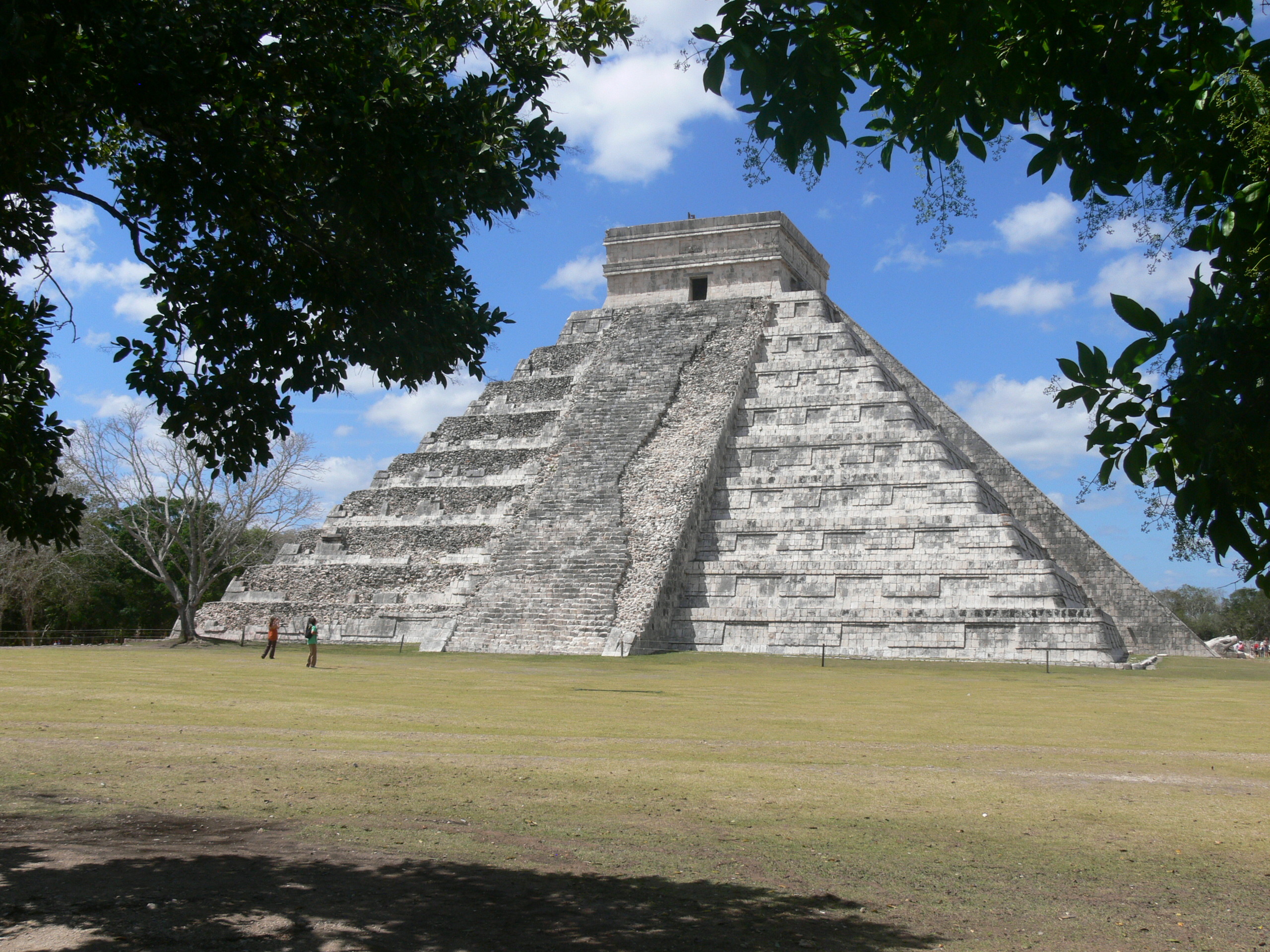 |
| El Castillo (pyramid of Kukulcán) in Chichén Itzá Source: wikimedia commons |
"Soil here is fuel, natural resources abundant. It's look like ideal place for human habitation. Except for one thing ... the Puuc region has no water sources ... no rivers, lake, streams, creeks." Source: Quest for the Lost Maya. PBS/National Geographic documentary
How ancient Maya overcome it? Well, they need to find a way to collect rainwater during 6 months of wet season. They use natural limestone bedrock to dug flat bottle shape cistern called chultun. This name is a combination of two Maya language words - chulub (rainwater) and tun (stone)[2]
 |
| Laser scan model of Kiuic chultun. Source: Quest for the Lost Maya. PBS/National Geographic documentary |
[In Kiuic] the Maya engineering the patio rooftops and plazas to capture every last drop of rain water. Than drain to eight chultuns (...). The entire hilltop function as giant rain barrel. So how many people would that ingenious water tank support. Chultuns have average capacity of about 10 000 gallons. They calculate that typical family of six consumes 27 gallons a day. So single chultuns could have support seven families through 3 rainless months.Chultuns when became unused (e.g. water found a way outside) they are used also as food storage or garbage collector. Sometimes even burial place[4].
Source: Quest for the Lost Maya. PBS/National Geographic documentary
Maya chultuns construction was inspired by natural cenotes, natural pits that exists also on Yucatan peninsula.
Primary sources:
[1] Quest for the Lost Maya. PBS/National Geographic documentary
[2] Chultun Ancient Maya Storage Systems - and perhaps more
[3] Chultun article on islc.net.
[4] The Chaa Creek Chultun is another indication of Maya existence at Chaa Creek Nature Reserve
[1] Quest for the Lost Maya. PBS/National Geographic documentary
[2] Chultun Ancient Maya Storage Systems - and perhaps more
[3] Chultun article on islc.net.
[4] The Chaa Creek Chultun is another indication of Maya existence at Chaa Creek Nature Reserve
Secondary sources:
[5] Kaxil Kiuic: Helen Moyers Biocultural reserve
Videos:
[6] Quest for the Lost Maya. PBS/National Geographic documentary
No comments:
Post a Comment